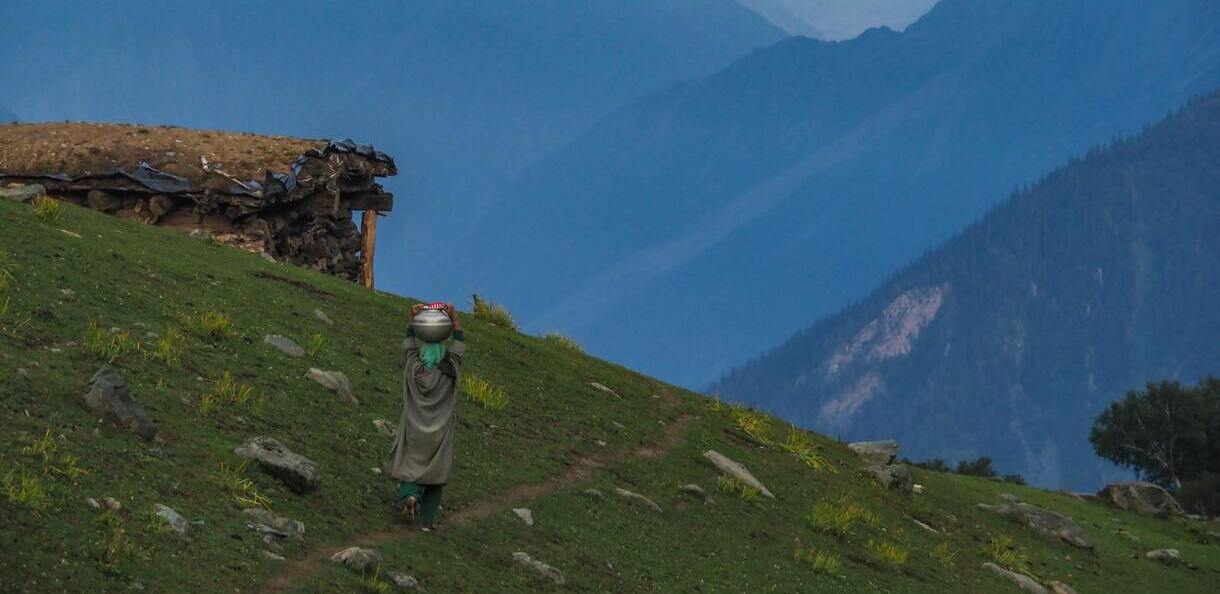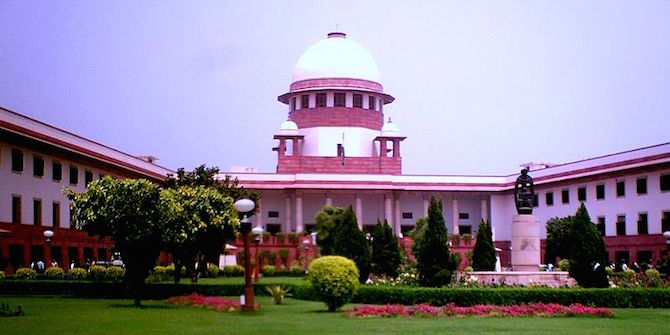 While it is illegal for a girl to be married before the age of 18 around 27 percent of girls in India are married before their eighteenth birthday. Ananye Krishna argues why a legal change, currently held up in Parliament, is only part of the answer to bringing this number down and ensuring girls in India are able to exercise their rights laid out in the Constitution.
While it is illegal for a girl to be married before the age of 18 around 27 percent of girls in India are married before their eighteenth birthday. Ananye Krishna argues why a legal change, currently held up in Parliament, is only part of the answer to bringing this number down and ensuring girls in India are able to exercise their rights laid out in the Constitution.
 Photo of young girl with friends | Credit: Unsplash @terry_boynton
Photo of young girl with friends | Credit: Unsplash @terry_boynton
Such a violation of the law, on such a large scale, is of grave importance for the welfare of women and should be much higher on the political agenda. One major reforms designed to counter such a violation was introduced by the National Commission of Women with the Draft Compulsory Registration of Marriage Bill (2005) and recently it has been recommended by the law commission to amend the Registration of Birth and Death Act, 1969 and include mandatory registration of marriage. One of the primary objectives of this Bill was to ensure that the number of child marriages in India is prevented and therefore decreased. Over a decade on, Parliament has still not passes this crucial Bill, meaning millions of girls continue to be subject to oppressive customs strictly followed in various parts of the country.
The existence of 27 percent of girls below the age of 18 already married before their landmark birthday not only violates the Hindu Marriage Act but also the right to equality, the right to dignity, and the right to life as enshrined in Articles 14 and 21 of the Indian Constitution. In addition the current figures violates the right to health, as recognized by WHO – that pregnancy prior to the age of 20 is harmful to the health of a young woman. In such circumstances, if the government continues to keep the Draft Compulsory Registration of Marriage Bill in legislative limbo, then it is failing in one of its most important duty: preserving the fundamental rights of its people. If the government is really sincere about “Beti Bachao,” a campaign to make the public aware of the government’s welfare services for young women, then this is one reform which it will have to bring about.
A push to see the bill passed is well overdue. But in the absence of this push for the draft bill, an amendment to the existing Hindu Marriage Act, should be made to increase the minimum age of marriage for girls to least 20. This amendment should not be the only change to this Act; it is also important that such a change is incorporated into other personal laws on marriage, as they also apply in India on various other religious communities.
Furthermore, as with all legal changes, it is important that it should not be just a change on paper, it won’t do any good if these new laws are as toothless. The current Section 18 of the Hindu Marriage Act, which doesn’t nullify a child marriage, just legislates for a sentencing of 15 days imprisonment, which may extend to a maximum of 3 months under Section 4 of the Child Marriage Restraint Act (1929). The injunction to child marriage is also only an optional injunction as Section 12 of the Child Marriage Restrain Act rules that a court “may” issue an injunction.
In addition, it is true that in 2006 the government did try to deal with the persistence of child marriage by coming up with the Prohibition of Child Marriage Act (2006). The problem however was that like with the Hindu Marriage Act, even this act did not produce a mechanism to ensure the prevention of this social evil. Section 3 of the Act simply said that a marriage will be void at the option of the contracting party being a child at the time of the marriage. This simply leaves it as the option of the child to decide whether she or he wants to continue with the marriage when they are themselves considered to be incompetent from making a decision to enter a contract under Section 11 of the Indian Contract Act (1872).
Given that that marriage is a decision which has a huge impact on a person’s life, this legislative change just did not have the force to ensure children are able to make a real choice. Thus, it is essential that any new laws must not follow this legislative pattern; in the very least the Prohibition of Child Marriage Act (2006) should be amended to make child marriage void ab initio.
If and when the new law comes into force, one of the most important requirements for the efficient enforcement of this law would be the presence of a proper, effective administrative system that verifies the age of the parties to marriage at the time of registration. With the problem of fake birth certificates extremely prevalent in India, it would be wise to place confirmation of birth on the Aadhaar card (India’s Universal identification Document). As is the case with other legislative changes regarding social traditions, the frameworks around their implementation are as vital as the legal change itself.
This article gives the views of the author, and not the position of the South Asia @ LSE blog, nor of the London School of Economics. Please read our comments policy before posting.
 Ananye Krishna is a 4th Year law student at NALSAR University of Law who has previously written for Oxford Human Rights Hub as well as SouthAsia@LSE.
Ananye Krishna is a 4th Year law student at NALSAR University of Law who has previously written for Oxford Human Rights Hub as well as SouthAsia@LSE.






